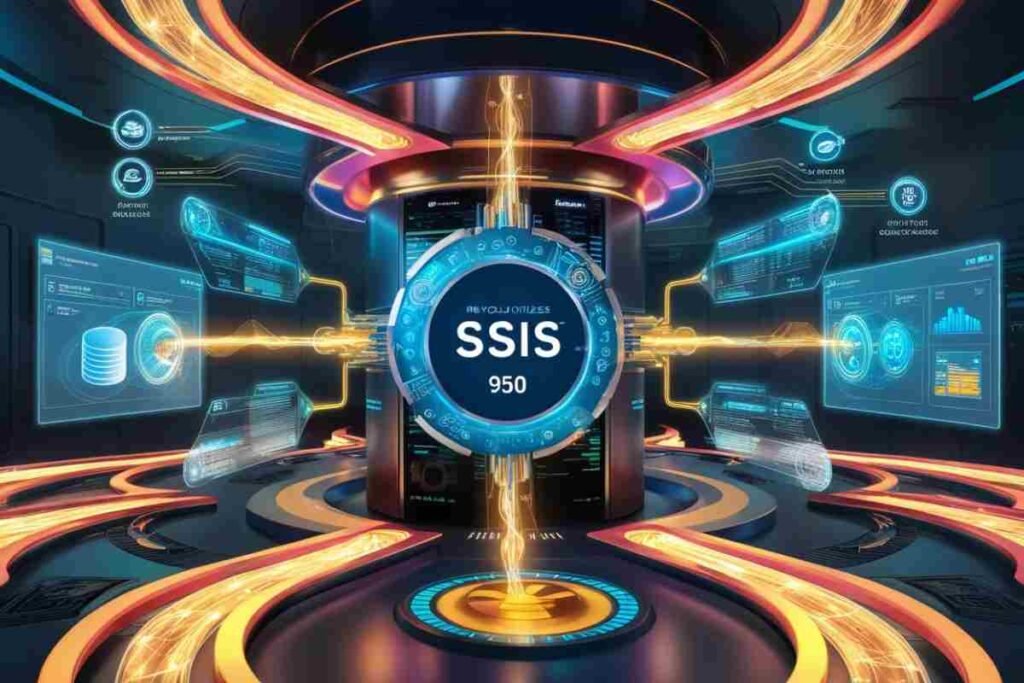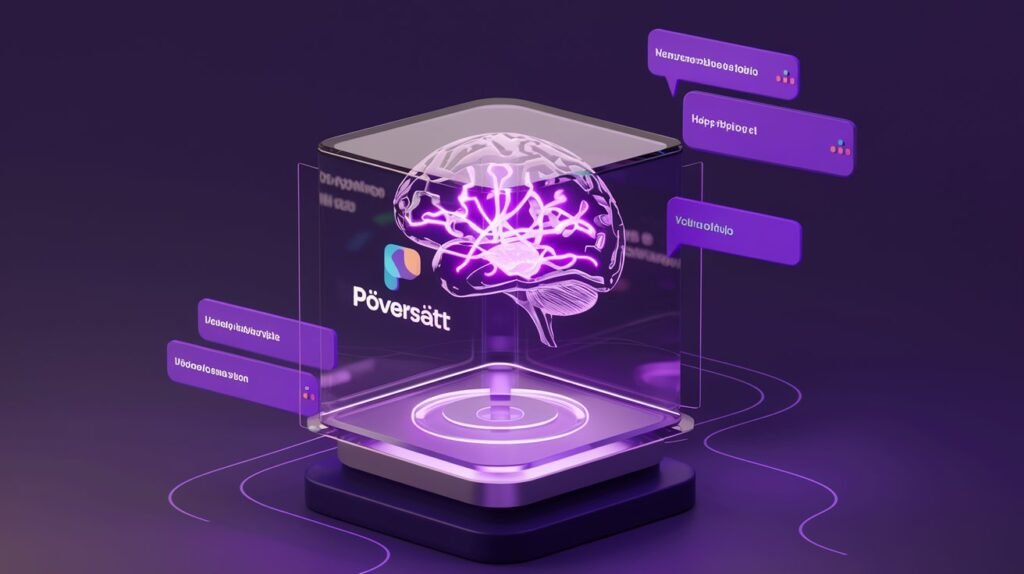SSIS 950, or SQL Server Integration Services 950, is a powerful tool that helps businesses handle data integration tasks efficiently. As organizations deal with growing amounts of data, managing this data across multiple platforms and systems becomes increasingly complex.
SSIS 950 is designed to address this challenge by offering an efficient, automated method for extracting, transforming, and loading (ETL) data from various sources.
This tool is essential for companies looking to improve their data management and streamline their operations.In this article, we’ll explore the features, installation process, advantages, and key use cases for this solution.
Why SSIS 950 is Essential for Data Integration

SSIS 950 enables businesses to integrate data from a variety of sources, including on-premises systems, databases, and cloud platforms. The tool supports complex data workflows, allowing companies to automate and manage their data operations seamlessly.
It also ensures data consistency, security, and compliance, which are crucial factors for organizations handling sensitive or regulated data.
Key Benefits of SSIS 950:
- Enhanced Performance: This solution boosts data integration performance, significantly reducing processing times.
- Cloud Connectivity: With improved cloud integration features, it allows for seamless data management across on-premises and cloud systems.
- Scalability: The tool can scale according to the needs of your business, handling both small and large datasets with ease.
- Ease of Use: The drag-and-drop interface simplifies complex data integration tasks, making it accessible even to users with minimal technical expertise.
This solution is the go-to tool for businesses that need to manage and integrate data from multiple sources in a fast, reliable, and secure manner.
How SSIS 950 Works
It operates through an easy-to-use interface, allowing users to design and deploy complex data workflows without needing extensive coding knowledge. Its main function is to extract data from different sources, transform it into the desired format, and load it into a target destination.
The workflow design involves creating “data flow tasks,” which define how data moves from one place to another. It offers several built-in tasks to handle different types of data integration scenarios, such as file transfers, database queries, and cloud integrations.
Key Features of SSIS-950:
- Data Flow Tasks: These tasks define how data is moved and transformed. It provides pre-built components for standard data flow operations, such as sorting, aggregating, and merging data.
- Control Flow: The control flow orchestrates tasks and their dependencies, ensuring that data flows smoothly from one step to the next.
- Error Handling: Advanced error handling tools allow users to capture and address any issues that arise during the ETL process, minimizing disruptions.
It is built for businesses looking to automate their data workflows and streamline the process of integrating data from disparate systems.
Installing SSIS 950: A Step-by-Step Guide

Installing this solution is relatively straightforward but requires some technical preparation. Below is a step-by-step guide to help you through the installation process:
- System Requirements: Before beginning the installation, ensure your system meets the minimum hardware and software requirements for it. This includes having the correct version of SQL Server and other related components installed.
- Download the Installer: Visit Microsoft’s official website to download the installer for the solution. Ensure you choose the correct version based on your system architecture (32-bit or 64-bit).
- Run the Installer: After downloading the installer, run it and follow the on-screen instructions. The installer will guide you through the process of setting up the solution on your system.
- Configure the System: During the installation, you may need to configure certain system settings, such as network configurations, database connections, and user permissions.
- Finish Installation: After completing the installation, restart your system to ensure that all components are properly configured.
Once the solution is installed, you can begin using it to design and deploy data integration workflows across your systems.
SSIS 950 vs. Previous Versions: What’s New?
It represents a significant upgrade over previous versions of SSIS. The new version includes several features that improve both performance and usability, making it a powerful choice for modern data management needs.
Key Differences:
- Cloud Integration: Now it includes enhanced integration with cloud services such as Microsoft Azure, enabling businesses to easily transfer and manage data between on-premises systems and the cloud.
- Better Performance: The new version comes with optimizations that speed up data processing and reduce the time it takes to load large datasets.
- Improved Security: It includes stronger security protocols, ensuring that data is protected during both transmission and storage.
- Advanced Error Handling: With more detailed error reporting and easier troubleshooting, it allows users to quickly identify and resolve issues in their data workflows.
These enhancements make it a more robust and versatile tool compared to older versions.
How SSIS-950 Enhances Data Management

For businesses, managing vast amounts of data from multiple sources can be overwhelming. it simplifies the process by providing a unified platform for handling ETL tasks.
By integrating data from various sources, it helps organizations create a single view of their data, enabling better decision-making.
Key Use Cases for SSIS 950:
- Business Intelligence: Integrating data from multiple sources, including databases, flat files, and cloud systems, allows businesses to gain valuable insights and make data-driven decisions.
- Data Migration: It ideal for migrating data from legacy systems to new platforms, ensuring that the transition is smooth and efficient.
- Data Warehousing: The tool can load data into data warehouses, providing businesses with a centralized repository for all their critical information.
By streamlining these processes, it helps businesses maintain control over their data and improve operational efficiency.
Conclusion
This tool is powerful, providing businesses with the ability to integrate and manage their data seamlessly. With its cloud integration, enhanced performance, and advanced features, it is the ideal solution for modern data management needs.
Whether you’re working on data migration, business intelligence, or data warehousing, it can help streamline your workflows and improve efficiency.
As data continues to grow in importance, this solution will play a crucial role in ensuring that businesses can manage and utilize their data effectively.
FAQs
What is SSIS-950?
SSIS-950 is the latest version of SQL Server Integration Services, a tool that helps businesses automate data integration tasks, such as moving and transforming data between different systems.
How do I install SSIS 950?
To install the solution, download the installer from Microsoft’s website, run the setup program, and follow the on-screen instructions to complete the installation.
What are the benefits of using SSIS 950?
It offers enhanced performance, cloud integration, improved security, and easier management of complex data workflows.
Can SSIS 950 integrate with cloud services?
Yes, it allows seamless integration with cloud platforms like Microsoft Azure, providing businesses with greater flexibility in managing their data.
What are the key features of SSIS-950?
Key features include data flow tasks, control flow orchestration, cloud integration, and advanced error handling capabilities.
How does SSIS-950 compare to older versions?
The solution includes several improvements over previous versions, such as better cloud integration, enhanced performance, and stronger security.
What types of data sources can SSIS 950 connect to?
It can connect to a variety of data sources, including relational databases, flat files, cloud systems, and more.
Why is SSIS-950 important for businesses?
It is essential for businesses looking to automate and simplify their data integration processes, making it easier to manage and analyze data across different systems.


